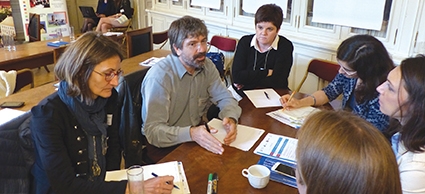The European Investment Advisory Hub: Assisting Project Promoters
Transport provides vital connections for millions of Europe’s citizens and businesses on a daily basis, allowing for the flow of both people and goods. Safe, reliable and high quality transport links are the backbone of the internal market and economy in Europe. The transport industry directly employs more than 10 million people, accounts for 4.5% of total employment, and represents 4.6% of the EU’s GDP. By attracting additional private and public investments, the Investment Plan for Europe is pivotal to ensuring transport as the key driver for socio-economic growth and jobs.
Transport faces a wide range of financing challenges across the EU: underinvestment, lack of suitable financing solutions, ageing infrastructure, an insufficiently developed and non-transparent pipeline of transport projects, continuous growth of urban populations, and regulatory and administrative barriers. The economic crisis has further limited the availability of resources and access to finance.
It is often the case that transport projects need up-front preparation and structuring before they are ready for financing. As a one-stop shop for technical advice, the European Investment Advisory Hub (EIAH) aims to help kick-start transport projects and make them more robust.
GEORGIA TODAY attended the Regional Transport Investment Conference held in Sofia, Bulgaria, in March, and heard from Mark Mawhinney, Head of Division, EIAH.
There are three pillars to the European Commission’s Investment Plan for Europe: the mobilizing of additional financing, a key element of the European Fund for Strategic Investment (EFSI)- with blending as a route in; supporting investment in the economy; and creating an investment-friendly environment- for many people this is about cutting back on regulation and also about capacity-building.
The EIAH will serve as part of Pillar Two: investment in the real economy.
“When we first set up, we were given a number of key work-stream activities,” Mawhinney says. “The development of an open forum, or website, through which anybody and everybody can come forward with potentially investable projects. The second, which has become more and more apparent and critical to the development of the Investment Plan for Europe: dealing with investable projects that appear with something missing- having not quite hit the point where they are financeable or investable”.
The third EIHA mission is to help member states develop the capacity to deal with financial instruments, EFSIs and Public-Private Partnerships in greater volume.
“We live in a global society- it is important for Europe to be competitive,” Mawhinney insists. “But we need to do more with fewer resources and it’s important that we take this on board. The EIHA and European Bank of Reconstruction and Development (EBRD), with DigiMove and the Innovation and Executive Agency (INEA), have worked to established a set blending call that makes sense from both a policy and practical point of view- one that can attract bidders to move forward and participate in the program”.
“This is a bold move; exciting,” he says. “But it is new and it is complicated- we’re moving into a new era that necessitates collaboration across a number of organizations”.
The Hub offers advice on existing project augmentation, identification of major gaps, advice on terms of reference, financial structure, and, post-call, providing advice on high-level project implementation.
“In the last months, requests have been coming in for a range of activities from various subsectors within the transport sector. The EIHA aims to promote the idea of a single Point of Contact. There will be a range of experts and consultants on hand and further support will be provided when necessary to successful applicants,” Mawhinney says. “But collaboration is necessary across a number of organizations in order to help potential projects. We’re working on a timescale here, and the projects that come through need to be reasonably mature, although those that are not mature will be helped to develop”.
Barriers to investment and challenges faced by the EU market persist in the transport sector, with direct impact on investments. Creating a stable and predictable regulatory environment in a coordinated manner is a key element in increasing investor confidence in the EU transport industry.
Within the Investment Plan, the EU Commission has set the objective to achieve at least an overall doubling in the use of financial instruments under ESI funds. This objective (approximately EUR 23 billion) is within reach.
Dimitri Dolaberidze











